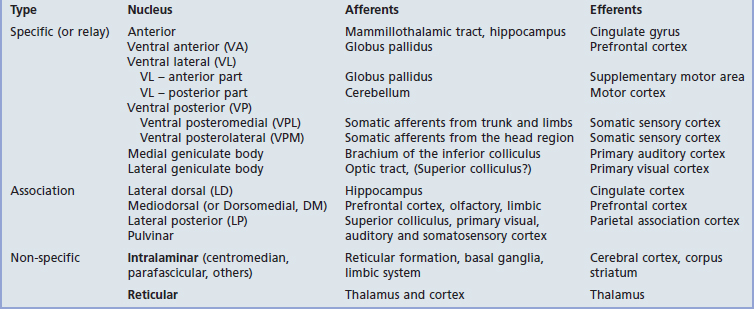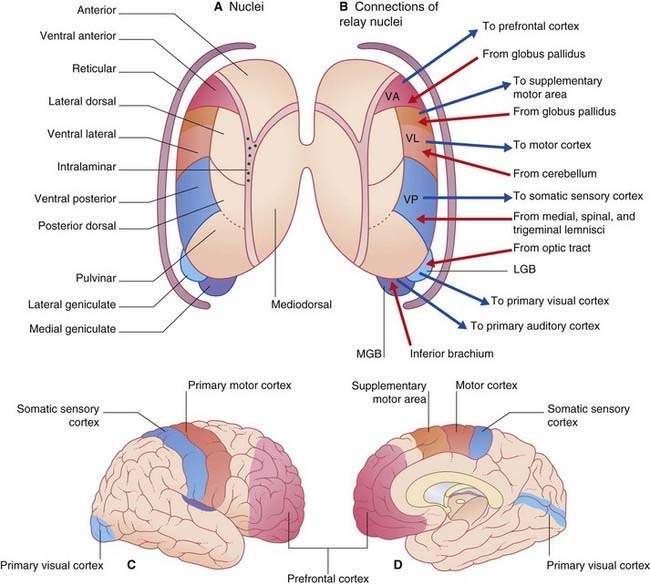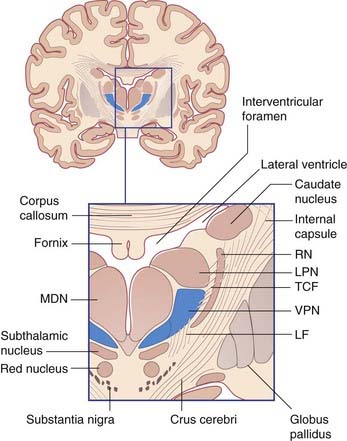27 Thalamus, epithalamus
Thalamus
The thalamus is the largest nuclear mass in the entire nervous system. It is a prominent feature in MRI scans in each of the three planes in which slices are taken. The afferent and efferent connections of the main nuclear groups are listed in Table 27.1. The connections are so diverse that the thalamus cannot be said to have a unitary function.
As noted in Chapter 2, the two thalami lie at the center of the brain. Their medial surfaces are usually linked across the third ventricle and their lateral surfaces are in contact with the posterior limb of the internal capsule. The upper surface of each occupies the floor of a lateral ventricle. The under-aspect receives sensory and cerebellar inputs as well as an upward continuum of the reticular formation.
Thalamic nuclei
All thalamic nuclei except one (the reticular nucleus) have reciprocal excitatory connections with the cerebral cortex. The Y-shaped internal medullary lamina of white matter divides the thalamus into three large cell groups: medial dorsal, anterior, and lateral (Figure 27.1A). The lateral group comprises dorsal and ventral nuclear tiers. At the back of the thalamus are the medial and lateral geniculate bodies. The external medullary lamina separates the thalamus from the shell-like reticular nucleus.
Specific nuclei
The specific or relay nuclei are reciprocally connected to specific motor or sensory areas of the cerebral cortex. They comprise the nuclei of the ventral tier and the geniculate bodies (nuclei). Their afferent and efferent connections are indicated in Figure 27.1B.
The anterior nucleus receives the mammillothalamic tract and projects to the cingulate cortex. It is involved in a limbic circuit and has a function in relation to memory (Ch. 34).
The ventral posterior nucleus (VP) receives all of the fibers of the medial, spinal, and trigeminal lemnisci (Figure 27.2). It projects to the somatic sensory cortex (SI). A smaller projection is sent to the second somatic sensory area (SII) at the foot of the postcentral gyrus (see Ch. 29).
The VP is somatotopically arranged, as indicated in Figure 27.3. The portion of the nucleus devoted to the face and head is called the ventral posterior medial nucleus (VPM), that for the trunk and limbs the ventral posterior lateral nucleus (VPL). Modality segregation is a feature of both nuclei, with proprioceptive neurons most anterior, tactile neurons in the midregion, and nociceptive neurons at the back. The nociceptive region is sometimes called the posterior nucleus.










